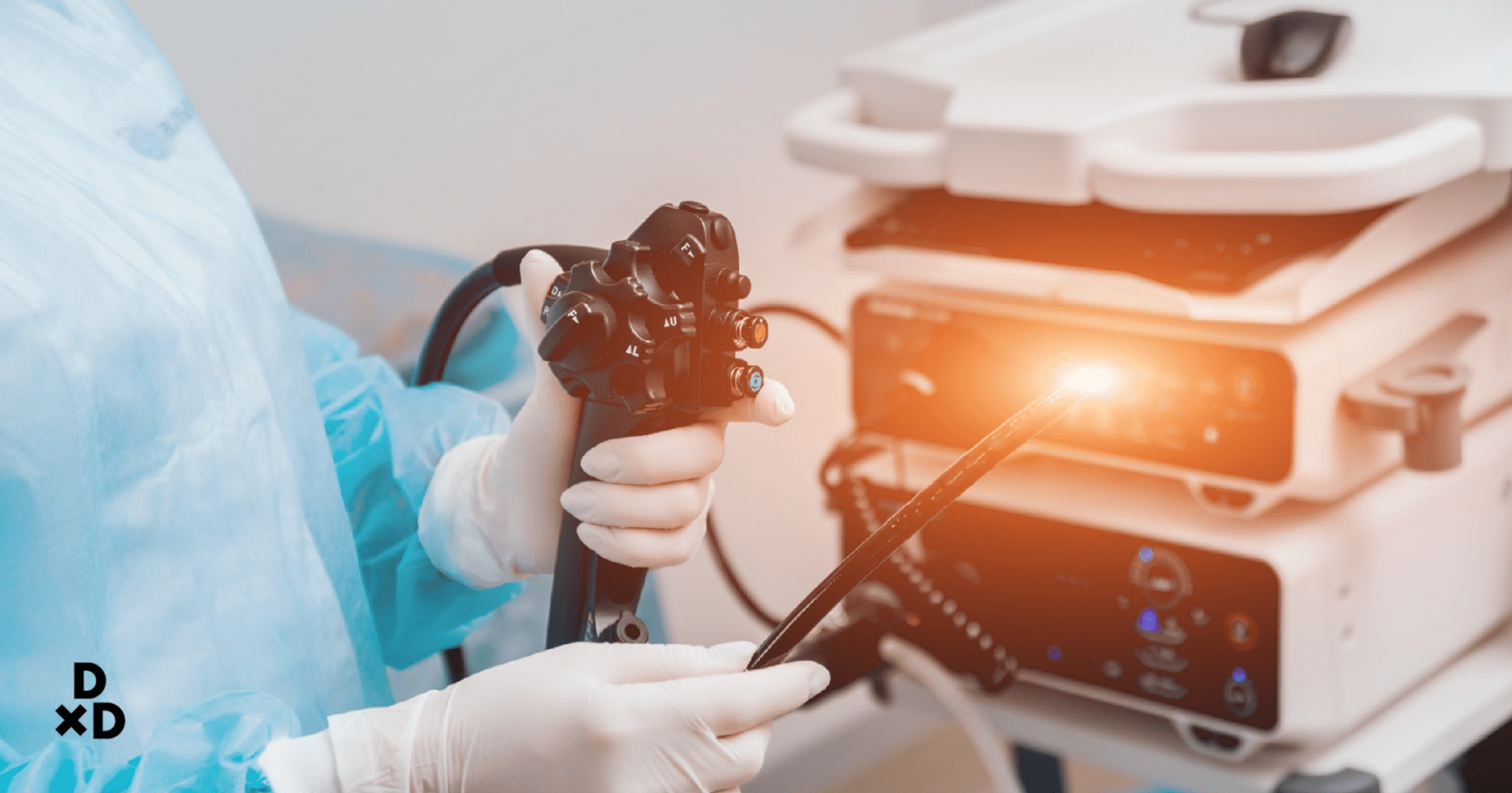Introduction
Obesity is often misunderstood as a cosmetic problem, but it is actually a medical condition that could lead to more severe disorders such as cancer, diabetes, hypertension and cardiovascular disease. In fact, obesity is the single biggest preventable cause of cancer, right behind smoking [1].
This also means that cosmetic treatments, such as liposuction or a tummy tuck - while useful for body sculpting - do not have any health benefits. According to a 2017 National Population Health Survey, Singapore’s obesity rate is approaching 10%. [2].
Let Dr. Shanker take you through all that you need to know about obesity and its complexities — the ranges of obesity, possible complications, treatment options, and common misconceptions you may have.
What is Obesity?
Obesity refers to the over-accumulation of fat that can bring about health risks such as diabetes and hypertension. It is classified as a medical condition by the World Health Organisation (WHO) and is defined as a Body Mass Index (BMI) of more than 30 kg/m2. This BMI cutoff allows WHO to monitor obesity trends worldwide, across different countries.
BMI is calculated as a person’s weight in kilograms divided by the square of his or her height in metres. BMI is used to categorise the severity of obesity:
- Normal weight - BMI of 18.5 to 24.9
- Overweight - BMI of 25 to 29.9
- Mild obesity (Class I) - BMI of 30 to 34.9
- Severe obesity (Class II) - BMI of 35 to 39.9
- Morbid obesity (Class III) - BMI beyond 40
Read also: What does it mean to be metabolically obese?
How is fat stored in our bodies?
In order to understand when obesity is considered a disease, we must first understand how fat is stored in our bodies. Every person carries a certain amount of body fat which is necessary for energy storage. Broadly speaking, our body is composed of bone (skeleton), muscle, fat, and organs.
While we look at the body, fat is stored in two main areas:
Subcutaneous fat
Subcutaneous fat is fatty tissue that is stored under the skin. It is very noticeable in the arms, thighs, buttocks, breasts, hips amongst other parts of the body.Visceral fat
Visceral fat is fatty tissue that is deep within the body, lining the internal organs such as the liver, intestines, and stomach. Your abdominal and chest area contain most of your visceral fat.
Excess buildup of visceral fat is known as visceral obesity. It is most apparent in the abdomen since the expansion of the chest due to visceral fat is limited by the rib cage.
There is a misconception that fat arms and thighs are indications of being unhealthy. Excess fat buildup, especially in subcutaneous regions, will change our body contours and appearance, which may be dissatisfying for some people. They may feel that their breasts, neck or thighs have become unflattering features. However, fat accumulation in these areas usually has little impact on health.
It is the overaccumulation of fat in the abdomen or in the chest, surrounding the organs, which causes health problems [4]. Visceral fat is dangerous because it can interfere not only with organ function but also disrupt hormonal balance, sugar control, blood pressure, etc.

What are the symptoms of Obesity?
There are a few signs and symptoms that a person suffering from obesity may exhibit. These are easier for you to detect compared to medical issues such as diabetes, hypertension and high cholesterol, which require specific tests. The most apparent physical symptoms include:
Pain in joints and back
People suffering from obesity carry a greater load and may find it difficult to move around compared to a lighter person. Heavier individuals are more prone to pain in the back, hip, knee and ankle joints.
Read also: The Ultimate Guide to Supplements for Joint Health in Singapore (2021)
Shortness of breath and obstructive sleep apnoea
The additional fat buildup in the neck and chest can impede your breathing. This may be noticeable during light physical activity such as walking and climbing stairs.
During deep sleep, weight pressing down on the neck and chest may shut down the airway, giving rise to a condition known as “obstructive sleep apnoea”. Insufficient air going into the lungs leads to hypoxia or low blood oxygen levels which can be potentially life-threatening.
Swelling in the leg
People suffering from obesity may have swollen legs. Chronic Venous Insufficiency (CVI) is the medical term for leg swelling caused by high pressure in the veins in your legs. Obesity can worsen CVI conditions.
Excessive perspiration
With more fat in the body, the body is heavier and requires more effort to move. As more energy is used, more heat is produced, which then leads to more sweating. The added body fat also creates more insulation, making it harder for heat to dissipate. The body perspires more to lose heat.
Irregular menstrual cycles (females)
In females, you may notice apparent signs such as irregular menstruation. In fact, this is a very common reason for a woman to see a doctor about her weight.
Obesity in women is correlated with a condition called polycystic ovarian syndrome, where the ovaries do not ovulate properly, disrupting the menstrual cycle [5].
Read also: The Ultimate Guide to Gynaecological Conditions in Singapore (2021)
Psychosocial effects
Living with obesity often means dealing with a lot more than just physical and medical problems. The stigma around obesity can affect a person’s quality of life. I have met young patients who have had unfortunate encounters such as unsuccessful job interviews and difficulties in their social lives due to their weight. Mental health issues can arise from obesity such as depression and anxiety. [6]
These are some of the signs and symptoms of obesity that may compel you to undergo a comprehensive health check. Contrary to popular belief, obesity is a disease that deserves proper care just like any other medical condition.
What causes Obesity?
Many people, including those who are themselves suffering from obesity, think that it is due to laziness or lack of willpower. As a result, obese individuals are often told to “just eat less and exercise more”.
While the diet and lifestyle of a person are important factors that contribute to obesity, the underlying influence of genetics and biology must never be discounted.
#1: It’s not always our fault
The first thing to understand is that the amount of body fat that we carry in our bodies is determined by our genes.
#2: Our body fat comes in a range
The second point to note is that the amount of fat we can potentially store in our bodies is not a fixed amount. Depending on your lifestyle and diet, your weight can fluctuate between the upper end or lower end of your genetically determined capacity of body fat. This is the genetic basis of the amount of weight we carry.
This is very important to understand. It is just like muscles. Different individuals gain muscle mass differently in terms of rate and volume. Some people can work out in the gym regularly and become physically quite strong but struggle to build bulky muscle.
This is because muscle mass, just like the amount of fat that can be carried in our bodies, and body shape in general, is programmed in our genes. Compared to more rigid characteristics such as your height and muscular volume, the amount of fat deposited in your body changes the most.
#3: We tend to bounce back
The third point is that even after losing weight through conscious efforts, your body will naturally tend to rebound to your highest level of fat content. Once your threshold of body fat has been upregulated, your weight will always tend to go upwards. This is another important fact of biology to understand.
#4: The effect of ageing
As you get older, your metabolic rate tends to slow down, making it harder to build muscle but easier to store fat. Also, most people tend to reduce their physical activity with age but not their food intake! The ability to lose excess fat deteriorates with age, even if you maintain your exercise intensity [7].
Once you understand the science behind obesity, you can appreciate that prevention is better than cure. That’s why if you are concerned about obesity, the best thing that you can do is to prevent your body weight from ever going up to an undesired level in the first place.

Who is most at risk of Obesity?
The people most at risk of obesity can be split into several groups, depending on genetics, nutrition and lifestyle.
If you have genes related to obesity, you are 80% at risk of obesity. If obesity seems to run in your family, you have a high risk of developing the condition as well. All biological processes in your body are governed by your genes.
Those which are related to obesity include the central regulatory pathway for your appetite. They involve many hormones such as ghrelin, insulin, leptin, adiponectin, amongst countless others [8]. Mutations in any of the genes in this pathway would put you at risk for obesity.
If you consume a lot more calories than you require, your body converts the excess into fat, which eventually leads to obesity. Many such problems begin in childhood and teenage years. Proper eating habits should be well-established early on in life.
Read also: The Ultimate Guide to Effectively Losing Weight in Singapore (2021)
If you lead a sedentary lifestyle, you are most definitely at risk. Not engaging in regular physical activity can mean that your muscles are flabby and you are not burning enough calories and can lead to a buildup of fat in your body.
Certain medical conditions such as hypothyroidism, low testosterone levels, etc. may lead to weight gain because of a sluggish metabolism. This affects a small percentage of people.
If you are exposed to high stress levels on a daily basis or have insufficient sleep or rest, you may be producing high levels of stress hormones and find yourself low on energy. This often leads to poor food choices, irregular eating, snacking and weight gain.
Certain medications may predispose to obesity. For example, someone suffering from sinusitis, asthma or joint problems may be taking steroid medication. Steroids inevitably lead to weight gain.
Serious gym-goers and those doing weight training may take supplements such as protein or steroids to increase muscle bulk. However, the moment they reduce or stop training, they are at risk for weight gain. That is why a lot of bodybuilders and gym-goers seem to fluctuate between being muscular and obese.
During pregnancy, hunger and appetite will certainly increase and women’s bodies will gain weight. Left unchecked, improper eating habits can lead to more weight gain than required for pregnancy. Also, it is important to rapidly lose excess weight during the postnatal period.
If not, the fat set-point may become permanently altered to a higher level. Pregnancy is one of the most critical times when ladies have to be careful about excessive weight gain.

Do smoking and alcohol contribute to obesity as well?
Smoking does not directly contribute to obesity. However, there is a behavioural issue related to smoking that could lead to obesity. Most smokers are used to holding something in their hands and putting it into their mouths.
In many cases, as a smoker tries to quit smoking, he or she may replace this with snacking, which can lead to an unhealthy habit of over-eating and hence, obesity. Additionally, smoking is already well-recognised as harmful to health as it is correlated with an increased risk for heart disease, cancer, and stroke.
Alcohol will definitely add calories to our bodies. Cocktails such as margaritas are also loaded with sugar, increasing the calorie count further. Especially since it is a liquid, alcohol and other drinks do not make you feel full and so you may easily consume a lot of calories without realising.
Juices, even homemade or freshly squeezed, are usually just as high in calories as any soft drink. If you consume a lot of beverages you are most certainly at risk for obesity.
It is always best to avoid smoking and beverages such as alcohol and sweet drinks by replacing them with plain water.
What are the complications of untreated Obesity?
Obesity is a serious condition and a major risk for many other chronic diseases, increasing the risk of cardio-metabolic disorders (eg. diabetes, hypertension, heart disease, stroke, fatty liver and kidney failure) and many cancers [9].
In fact, obesity increases the risk of more female cancers than male cancers. Breast cancer, ovarian cancer, and uterine cancer are highly correlated with obesity.
It is important to identify the number one risk factor in your own life. For smokers, smoking is the number one risk factor. If you do not smoke, obesity is the next risk factor to look out for.
Prevention and treatment of obesity is key to preventing such complications from ever arising.
How is Obesity diagnosed?
We use Body Mass Index (BMI) to identify the level of obesity for a medical diagnosis.
In Singapore, the cut-off for obesity is adjusted lower than the WHO criteria that applies worldwide. A person is suffering from obesity if his or her BMI is 27.5 kg/m2. This is because Asians tend to have more body fat for the same body weight as compared to Caucasians.
What other tests are run if you suffer from Obesity?
Physical tests and measurements are done to check your weight and fat percentage. A bioimpedance analyser (BIA) machine could be used. Here, a current is run through your body and the resistance to the current is measured, allowing the percentage of your body fat to be calculated.
Additionally, we usually run tests for all the different related conditions such as diabetes, hypertension and high cholesterol. We will also examine liver and kidney function which can be affected by obesity.
How do I prepare for such consultations?
As with any medical consultation, you should bring along any medical records you have as the information could be useful to your doctor. It is essential to understand your unique biology and circumstances in order to uncover and target the correct issues and problems you are facing.
The most important thing I tell my patients is to think about your diet and lifestyle history from way back in their childhood so that when you come in we can discuss all of it properly. That way, we can identify and analyse your trigger factors for weight gain and devise a treatment strategy that works for you.
How is Obesity treated?
Overall treatment approach
While genetics play a part in obesity and it is important to understand that, it is not something we can change. What we can do is help you make changes in your diet and lifestyle habits. That is the first step in the treatment of obesity.
As with any chronic disease, we need to set treatment goals. The first target is to help you achieve weight maintenance. There are a lot of people who experience weight fluctuations or “yo-yo”.
This may be due to coupling abnormal eating habits with intense dieting regimes like detox sessions. These practices can eventually lead to weight gain in the long run.
Secondly, it is important to tackle the health conditions that are prevalent with obesity such as hypertension and diabetes. That means actively trying to control blood pressure and blood sugar levels, amongst other factors, to hit the respective health targets.
Usually, weight maintenance and control of health conditions can be achieved by adjusting diet and lifestyle habits. My team and I would recommend exercise regimes and diet suggestions based on each patient’s unique case history. Try eating healthy and opting for foods with healthier choice symbols at the grocery store.
Oftentimes, patients get discouraged by the minor changes they see on the weighing scale — however, they should not discount other benefits like lower blood pressure and sugar levels. These are of tremendous value and are critical targets in the overall treatment.
Once you meet those objectives, you achieve what we call Health at Every Size.
Medication
For a start, medications may be useful if you have made all the diet and lifestyle changes but are struggling to shed the pounds. In Singapore, 3 types of medication can be prescribed by doctors:
Orlistat (Xenical, etc.) prevents the breakdown of ingested fat so it is not digested and absorbed but passed out of your system. The side effect is oily stools.
Phentermine (Duromine, Panbesy, etc.) helps to suppress appetite. Side effects include insomnia, irritability, tremors, etc.
Saxenda, a synthetic form of gut hormone GLP-1 that reduces hunger and makes you feel full. The side effects include headache and bloating.
With proper adjustment of medication dosage dietary and lifestyle changes, you may lose about 5 to 10% of your body weight.

Medical procedures
Medical procedures are usually used for patients who wish to lose a higher percentage of their weight. The principle behind these procedures is to reduce the capacity of the stomach in order to reduce the feeling of hunger and speed up the feeling of satiety or “fullness”.
Bariatric surgery
If you are interested in losing 20% or more of your weight, you may have heard of or are considering bariatric or weight-loss surgery. It is a very effective tool if used properly, to help people lose large amounts of weight.
Bariatric surgery refers to surgical procedures that reduce the size of the stomach so that you feel full and satisfied with a small meal. That feeling of fullness is transmitted to the brain via a feedback loop, and the brain will stop craving for more food.
The most common procedure worldwide is the laparoscopic sleeve gastrectomy. Another option is the gastric bypass. Although it is called a surgery, there are no large cuts. Instead, keyhole punctures are used to pass chop-stick like instruments into the abdomen to perform the operation. In our practice, procedures are completed within 1-2 hours and you may return home the next day.
Along with advancements in technology we have 2 new non-invasive interventions that help bridge the treatment gap between medications and surgery.
Non-invasive interventions
**Elipse Intra-gastric balloon
**
An intra-gastric balloon usually requires an endoscopy for insertion and/or removal. The balloon takes up space in the stomach and helps you feel full. However, the new Elipse intra-gastric balloon that comes in the form of a pill or capsule does not require any endoscopy, needles, sedation or anaesthesia neither for placement nor for removal.Instead, you are just required to swallow the capsule with sips of water. Once it hits the stomach, the balloon is filled up with fluid and an X-ray taken to check its position. The balloon remains in the stomach for about 4 months, keeping you feeling full and reducing your hunger cravings.
After 4 months, the biodegradable valve pops, the balloon deflates and is passed painlessly out with your stools. Most people do not even realise when this happens! The gastric balloon can help you lose more than 10% of your weight.
**Endoscopic Sleeve Gastroplasty (ESG)
**An endoscopic sleeve gastroplasty is a less invasive way of performing a gastric sleeve. Basically, stitches are placed to tighten the stomach and reduce its capacity by 70 - 80% during an upper GI endoscopy.
One does not need to be admitted to the hospital, but to come into the clinic in a fasted state. ESG is a day procedure where you will be put under a short general anaesthesia (GA). A special device is mounted onto the endoscope and used to place stitches from inside the stomach.
After the procedure, you will be monitored for a few hours and given fluids. Once you are fully awake, you will be allowed to go home and return for a review in 2 to 3 days. This is a much safer and quicker option than gastric sleeve surgery, with minimal downtime.
What are the costs of treating Obesity?
The cost depends on whether the treatment is outpatient in nature, if a procedure or device is involved and which medication is prescribed. Medications and consultations cost a few hundred dollars.
A gastric balloon procedure can cost a few thousand dollars. An endoscopic sleeve gastroplasty procedure costs over 10,000 dollars and bariatric surgery upwards of 20,000 dollars. Medisave and insurance may be used to cover most procedures, reducing your out-of-pocket payments.
The treatment period can last from as short as 3 months to 2 years. It is important to understand that weight management is an ongoing process and requires careful follow-up and adjustments to the treatment plan according to what works and what doesn’t.
Success requires commitment and a willingness to try different strategies. Since last year we started using video consultations to reduce the need for in-person visits and yet continue to support our patients through their weight-loss journeys.
Are these treatments Medisave claimable?
Yes, these treatments are Medisave claimable. Approvals hinge on whether or not you are diagnosed as clinically obese, have any co-existing medical conditions, and the type of treatment you choose.
Remember, obesity is a medical condition and not just a cosmetic problem. If you have already tried making changes to your diet and lifestyle but it’s not working, come on down for a chat.

Are there any misconceptions about obesity you would like to address?
“Eating too much and not exercising causes obesity”
This is a misconception. A lot of people think that obesity occurs just because they eat too much and do not exercise. While the quantity of food and activity are important contributing factors, there are many people who eat plenty of unhealthy food and rarely exercise but never become obese.
Your genes and biology play a big role in determining if you will become obese or not. This is also what makes treating obesity so challenging. Without understanding the specific drivers for obesity in each individual, simply asking people to “eat less and move more” is not going to work.
“Obese people are lazy”
There is that huge ongoing stigma around obesity and people should not feel that if they carry excess weight it is entirely their fault. As we discussed earlier, the way fat is deposited in the body is based on genetics, which means your genes have a large hand in whether or not you gain weight.
Some people may eat a lot without gaining weight and vice versa. Many obese people are actually quite fit and active. That is also why we should neither judge nor compare ourselves with others.
“It is easy to treat obesity”
That is not the case. The fight against obesity is hard. It’s an ongoing battle. Whatever you do every day can impact your weight. If you want to lose weight, you have to do something about it conscientiously every day — not only for a week or two but indefinitely.
We love to teach people tips and tricks to achieve a healthy routine because it is those daily habits that lead to some people becoming more successful than others in losing weight and keeping it off.
We have to understand that our body weight is like our body temperature, it is natural and not at all under our conscious control. In fact, all our organs function in an automatic manner, governed by the autonomic nervous system.
However, we can make conscious efforts to help deal with how our body works to treat obesity.

Conclusion
The stigma around obesity is far-reaching but do not let it get to you. Understanding obesity as a medical condition and the science behind how our body works to store fat can help you attain health at any size.
Just like any medical condition, it requires appropriate medical treatment. If you suffer from obesity, it is very important to find a doctor you can trust and communicate both your desires and concerns to so that you may work together in crafting a treatment plan that best suits your needs.
Head over to Dr. Shanker’s profile to book a consultation.











